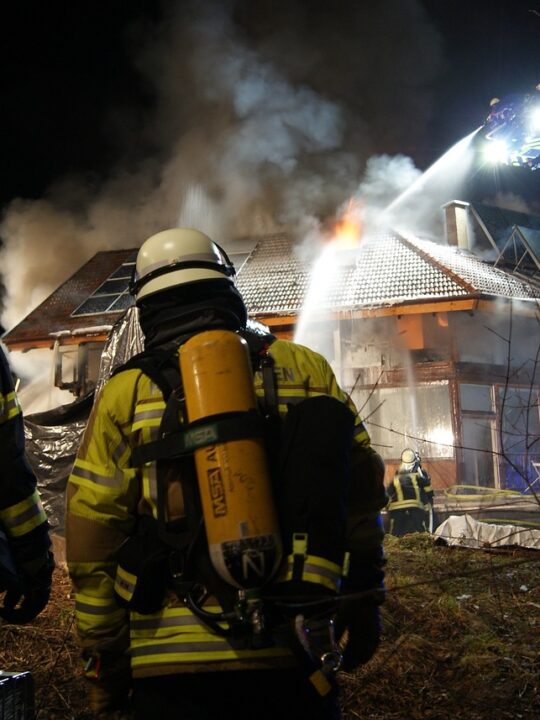One of the best ways to improve your home’s market value is by adding a floor coating to your garage. But while a beautiful garage floor will appeal to buyers, if you get it wrong, you could end up with an awful mess in your home.
When you install the right coating the right way, you’ll have a garage that looks and functions better for years to come.
Here are a few common floor coating errors to avoid for your garage.
Table of Contents
1. Insufficient Surface Preparation
Insufficient surface preparation is one of the most common floor coating errors when it comes to coating your garage. If the existing surface is not properly cleaned, scraped, and etched, the coating may not adhere correctly and could chip, peel, or flake off prematurely.
Make sure to take the necessary time and extra steps to prepare the surface accordingly for a better, longer-lasting result for your garage floor coating.
Here’s a guide on floor coating preparation:
Clear the Area
Remove all items, tools, and vehicles from the garage. This will provide you with a clear workspace and prevent any obstructions during the preparation and coating process.
Evaluate the Floor
Inspect the floor for any cracks, spalling, or damage. Repair these issues using an appropriate concrete repair product. Fill in cracks with a concrete crack filler and use a patching compound for larger damaged areas. Allow sufficient drying time for the repairs to cure.
Remove Stains and Sealer
Clean the floor thoroughly to remove any stains, dirt, oil, grease, or other contaminants. Start by sweeping or vacuuming the floor to remove loose debris. Then, scrub the floor using a concrete cleaner or degreaser, following the manufacturer’s instructions.
Etch the Surface
Etching the concrete helps create a rougher surface, which promotes better adhesion of the coating. Prepare an etching solution by mixing water with a concrete etching product according to the manufacturer’s instructions.
Check for Moisture
Moisture can interfere with the coating’s adhesion and performance. Perform a moisture test on the floor by tapping a plastic sheet tightly to a small area of the floor and leaving it for 24 hours.
2. Skipping Priming
Priming the surface prior to applying the coating helps the material adhere better to the surface, extends its life, and allows the topcoat to create the color and finish desired. Not priming the surface can lead to the finish not adhering properly, resulting in cracking, wear, and longer-term damage.
If you’ve chosen a chemical-resistant finish, priming also helps to ensure that any residual cleaners or chemicals are sealed properly against the surface. It also helps to minimize dusting, staining, blistering, and peeling in the future. Taking the extra step of priming will save time, money, and frustration in the long run.
3. Inadequate Drying Time
Before applying any floor coating product, it is important to ensure that the floor is completely dry and free of moisture in order to ensure proper adhesion of the coating. If the floor is covered with a coating too soon after cleaning, it may not dry properly and the coating may not adhere properly, leaving the floor unprotected.
To avoid this error, give any floor coating product a minimum of 24 hours of drying time and allow for more drying time if the temperature or humidity levels are higher than normal. If the floor was recently cleaned with a power washer, it would likely require more drying time due to the increased moisture.
4. Incorrect Mixing Ratio
Taking the time to measure and mix the proper ratio of two-part polyurethanes, epoxies, and other specialty coatings, or mixing in the correct amount of catalyst or hardener, is essential for an optimal coating system. Using too much of either component can cause improper curing and/or poor adhesion.
Too much catalyst or hardener also generates off-gasses that can corrode the surface and surrounding areas, leading to further damage and requiring costly repairs. One of the best ways to avoid incorrect mixing ratios is to thoroughly read the specific product’s instructions and follow the recommended guidelines. It’s important to read more info on polyurea coatings to achieve the ideal consistency.
5. Improper Application Technique
When applying any coating or paint, it is essential to practice proper technique. Using the wrong brush, roller, or sprayer can lead to coats that are either too thin or thick. Particle build-up from previous coats can also occur, leading to patchy application.
Applying the coating too quickly can also cause problems by preventing the product from drying and curing properly. It’s important to use the correct roller type for the product you’re using. Some products require the use of a lint-free roller, while others require a textured one.
6. Inadequate Coverage
If your coverage layer is too thin, it will not be strong enough to protect the concrete from absorbing moisture, chemical, or vehicle fluids. Inadequate coverage can lead to uneven or patchy-looking floors, giving it an unprofessional and unattractive appearance.
To prevent inadequate coverage, always make sure you have the right ratio of paint to epoxy and that you have the proper tools to spread the coating evenly. Apply multiple layers when necessary and do not rush the job. The end result will be a durable and attractive, long-lasting garage floor.
7. Ignoring Temperature and Humidity Guidelines
Temperature and humidity fluctuations can cause the coating to dry too quickly, resulting in a weakened bond or lack of flexibility. This could lead to cracking and lifting of the coating. Even if the coating says it’s suitable for a garage, the environment you keep it in should also be taken into consideration.
During hot summer months, the temperature can rise significantly, even with the garage door shut. Similarly, humid environments can slow the drying process and cause bubbling or crackling in the coating. Opting for a product with a wider temperature range will help to minimize these potential issues.
Avoid Common Floor Coating Errors Today
When it comes to coating your garage, preparation and research are key. The better prepared and informed you are, the smoother the floor coating process.
Avoid common floor coating errors to ensure your project is successful. Get professional insights from an experienced floor coating installer to ensure your garage floor coating looks great and lasts for years.
Did you find this article helpful? Check out the rest of our blogs!







